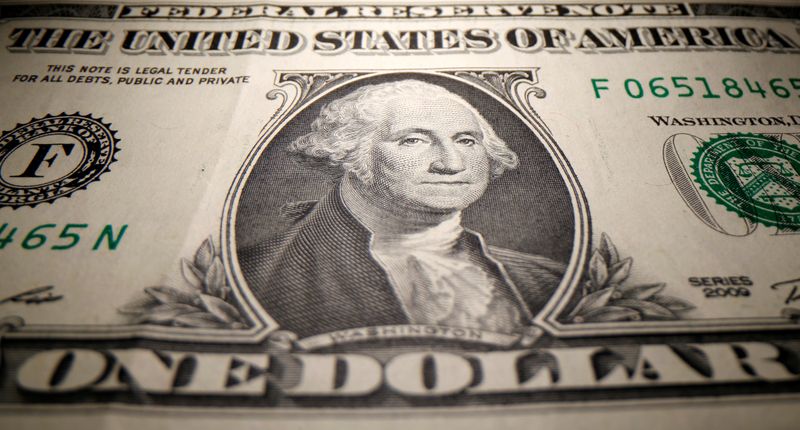By Gertrude Chavez-Dreyfuss
NEW YORK (Reuters) – The dollar edged higher on Tuesday in choppy trading, with no clear direction, as investors kept an eye on debt ceiling talks to avert a possible default that could reverberate across asset markets and damage confidence in the world’s largest economy.
The dollar index, a measure of the greenback’s value against six major currencies, was up 0.2% on the day at 102.61. Against the yen, the greenback rose 0.2% to 136.315 yen
Democratic President Joe Biden and top congressional Republican Kevin McCarthy’s U.S. debt ceiling negotiations ended on Tuesday after less than an hour, as the looming fear of an unprecedented American debt default prompted Biden to cut short an upcoming Asia trip. But the meeting ended on an upbeat and unexpected note as McCarthy, coming out of the meeting with Biden and other congressional leaders, said, “It is possible to get a deal by the end of the week.”
Both parties agree on the need for urgent action.
“Clearly, to the extent that there is a default risk, it would be chaotic. The question is in a default, can you have Treasuries as collateral in a world that’s highly levered?” said Axel Merk, president and chief investment officer at Merk Investments in Palo Alto, California.
Historically speaking, the U.S. dollar tends to rally in times when there is financial stress and in periods of deleveraging as investors scramble to unwind risky bets.
“But you don’t want Treasury bills,” Merk said. “So it’s very difficult to suggest that we would have a dollar rally in that deleveraging. I would say it’s very hard to predict what will happen other than volatility might be dramatic.”
In afternoon trading, the euro slipped 0.1% versus the dollar to $1.0858, while sterling fell 0.4% to $1.2478.
The dollar earlier rose after U.S. retail sales rose less than expected in April, but details showed that the underlying trend remained solid. This suggested that consumer spending likely remained strong early in the second quarter.
Retail sales rose 0.4% last month. Data for March was revised slightly lower to show sales dropping 0.7% instead of 0.6% as previously reported.
In line with the generally upbeat economic picture, industrial production jumped 1% in April, easily topping expectations for a flat reading and up slightly from the revised 0.8% increase in March.
The reports suggested that while the market widely expects the Federal Reserve to pause increasing rates at the next meeting, a hike in borrowing costs was not off the table.
“While there were some mixed signals in today’s various data reports, on net most were favorable and early in the quarter we’re continuing to track some upside risk to our 1.0% 1Q GDP growth projection,” wrote Michael Feroli, chief U.S. economist at J.P. Morgan, in a research note.
“Even so, given all the dark clouds on the horizon, we continue to see the Fed on hold at the next meeting in mid-June.”
Richmond Federal Reserve President Thomas Barkin on Tuesday doubled down though on the higher-for-longer mantra. He said he likes the “optionality” implied in the central bank’s latest policy statement, but he is “comfortable” with raising interest rates further if that is what is needed to lower inflation.
That has been the message from several Fed officials over the last week.



